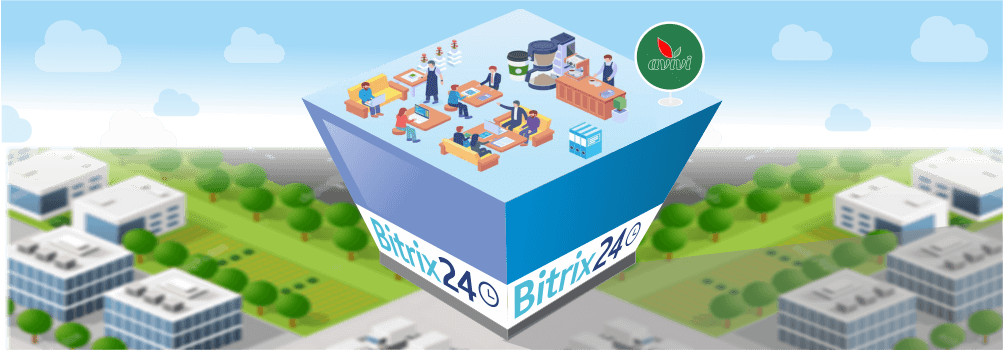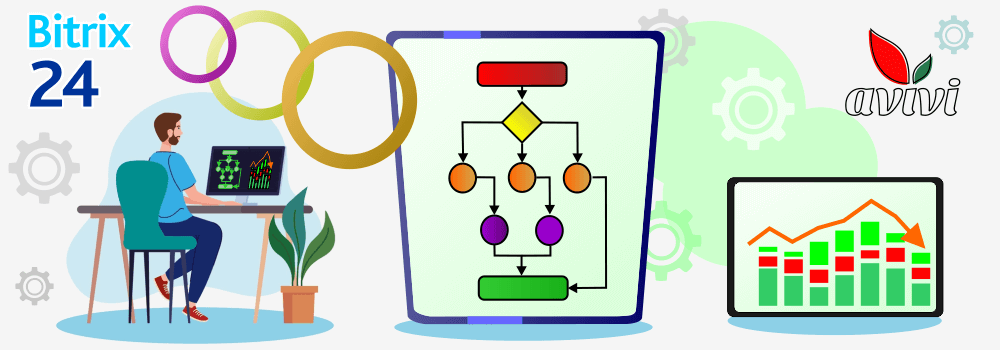B2B, B2C, B2G, C2C: segmentation and specificity for Bitrix24
11 October 2022
next article
Selling is a systemic process. And the better this process is organized, the more success can be achieved. Different areas of sales have their own characteristics: starting with numerous types of commercial relations and the portrait of the target audience and ending with the specifics of the sales cycle and business building models. What is the difference between B2B, B2C, B2G and C2C and what should you know about each of these segments?
Famous "players"
The common abbreviations B2B and B2C denote a commercial relationship between a business (seller) and an end buyer (business or individual, respectively). They describe the market niche and allow you to quickly assess the specifics of the business.
B2B — "business to business"
Customers of B2B companies are other businesses and enterprises. This includes not only the means of production, but also services or outsourcing. That is, the size of such a company can vary significantly: the final buyer of powerful food processors produced by the plant can be a family restaurant. And vice versa: a small IT company can provide a software product to several corporations. In general, the product of the company operating in the B2B segment is aimed at specific consumers.
In B2B sales, it is important to remember:
-
the purchase in this segment is caused by the need to solve a specific problem. Therefore, marketing should be aimed at revealing the benefits that the business will receive from the purchase;
-
the number of clients is limited, therefore it is important to carry out point-by-point work and direct efforts to high-quality negotiations, presentation of your product and analysis of the decision-making process in the client's company;
-
there are very marginal niches in the B2B segment: sometimes it is more profitable to carry out 1 large transaction than a dozen small ones.
B2C — "business to consumer"
B2C is short for businesses that sell goods and services to customers for personal use. It can be a large hypermarket, and a small hair salon or consulting center. The field covers retail outlets, food establishments, consumer services (from car rental to beauty salons), internet commerce (paid online services, online stores, etc.).
Specifics of selling B2C businesses:
-
the most important thing to consider when organizing sales and advertising campaigns in this segment — purchases are made based on subjective desires, and rationality does not always prevail;
-
the focus is on the needs of entire groups of people, not specific consumers. The offers are as universal as possible to reach the greatest possible number of potential buyers.
-
successful advertising campaigns + good service are the main components of success in B2C sales. Competition in this segment is very high, so it is worth finding and qualitatively forming a successful USP.
B2G — "business to government"
B2G refers to the sphere of relations between business and government bodies and institutions. Relations in this sector are clearly regulated by the legislation of each country, and are based on public procurement. Every step of the private sector is strictly regulated and scrutinized: procurement procedures, opportunities and restrictions.
Such commercial relations have a number of specific features:
-
procurement tender system;
-
complex structure of the decision-making mechanism;
-
stability of business relations;
-
involvement of administrative resources;
-
financial conditions (complex calculation system, dependence on the state budget).
The state interacts with business by making purchases, in which it is the initiator. Another way of interaction is private-public partnerships, which are created to solve complex socially significant tasks. In this case, the business invests funds in various state projects.
The most successful solution for sales in this area will be cooperation with a specialist who knows the intricacies of public procurement and the nuances of organizing the process of interaction between business and the state. This includes the search for information about future purchases, the search for tenders, and the formation of correct applications. The fulfillment of obligations should be approached as carefully and responsibly as possible.
Despite the difficulties of doing business in the B2G segment (dependence on the qualifications of employees, bureaucracy, dependence on uncontrollable structures and processes), there are a number of advantages:
-
work according to a clear algorithm;
-
the possibility of long-term planning;
-
work with large orders.
C2C — "consumer to consumer"
The "consumer-to-consumer" type of relationship refers to online and offline sales in which the seller and the buyer are individuals. Most often, the seller is not officially an entrepreneur. A feature of C2C is the quick change of roles "seller"-"buyer". This area has a lot in common with B2C:
-
the purpose of purchase is personal use;
-
small average check;
-
a small volume of orders with a large number of customers;
-
advertising campaigns are aimed at certain groups of consumers, the number of which in the group itself is unlimited.
Third parties (trading platforms or newspapers with announcements) often act as intermediaries in such sales. Therefore, the types of commerce in this area depend on the type of intermediary:
-
online platforms — on such resources, natural persons either sell goods once or do it systematically. In the second case, they are, in fact, engaged in unregistered business activities. Different platforms have their own limitations that should be considered;
-
print and electronic media — newspapers and classifieds magazines publish offers from "sellers" with whom potential buyers contact directly;
-
auctions — in addition to facilitating the sale, the intermediary provides additional services, such as product evaluation, sales support and security.
What do we stand for brackets?
As you can see, all four areas have their own tasks, target audience, sales specifics, average purchase price, marketing campaign strategies. In any case, success depends on the correct assessment of the client's needs and the construction of an appropriate sales strategy.
That is why we can conclude that the use of Bitrix24 as a set of tools for business promotion is relevant for each of the segments. It is customary to believe that the most popular of the tools — the CRM system — is needed for B2C, where the end consumer is the client. However, in the B2B sector too, Bitrix24 has proven itself as a reliable and effective assistant. In the same way, the system is able to contribute to C2C. Well, as for relations with government institutions, where nothing can be forgotten or missed, Bitrix24 is simply an absolutely necessary system.
In each of the segments, you can both earn big money and "burn out". But with the use of modern technologies, this risk will always be smaller, and success, on the other hand, will be faster and more tangible financially. That is why in further articles planned by the Avivi team for the near future, we will take a detailed look at the capabilities of Bitrix24 in segments. Stay tuned, stay tuned, and better yet, subscribe to our newsletter if you haven't already.

We will reach out to within 10 minutes







